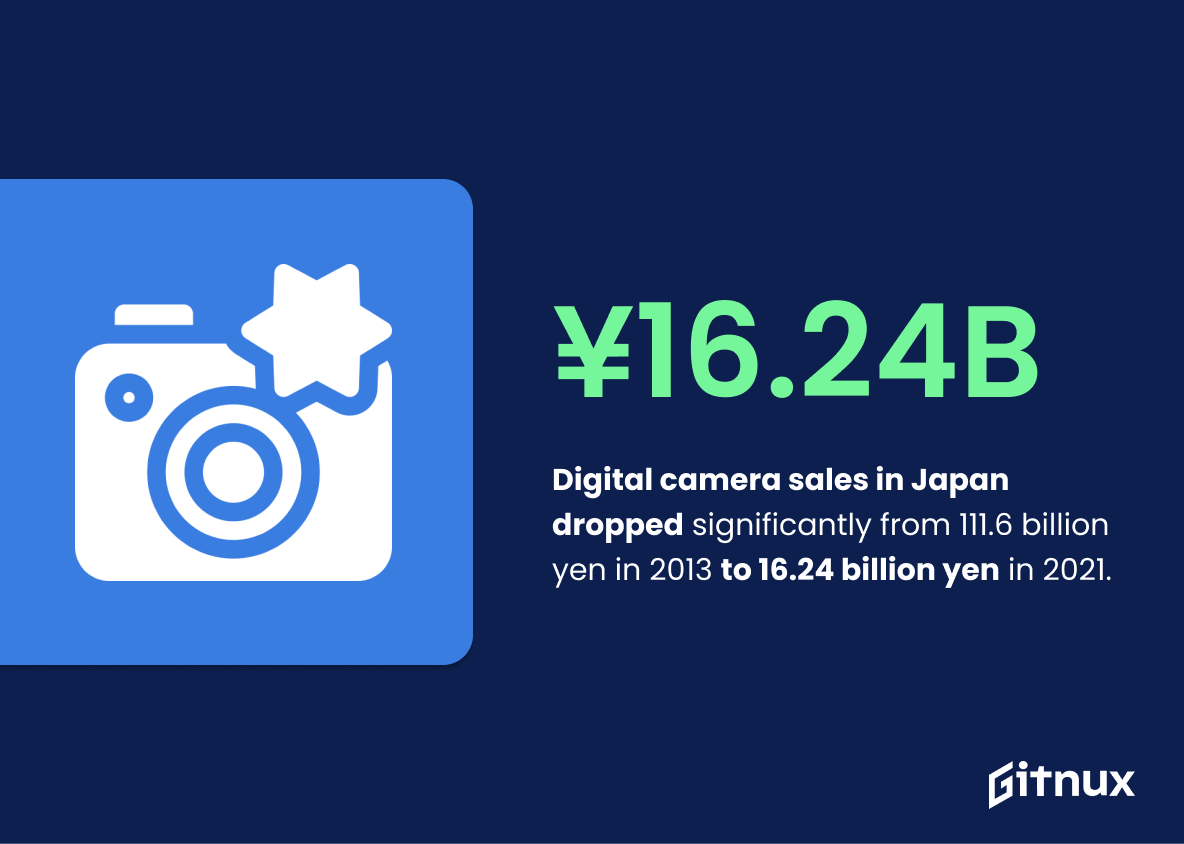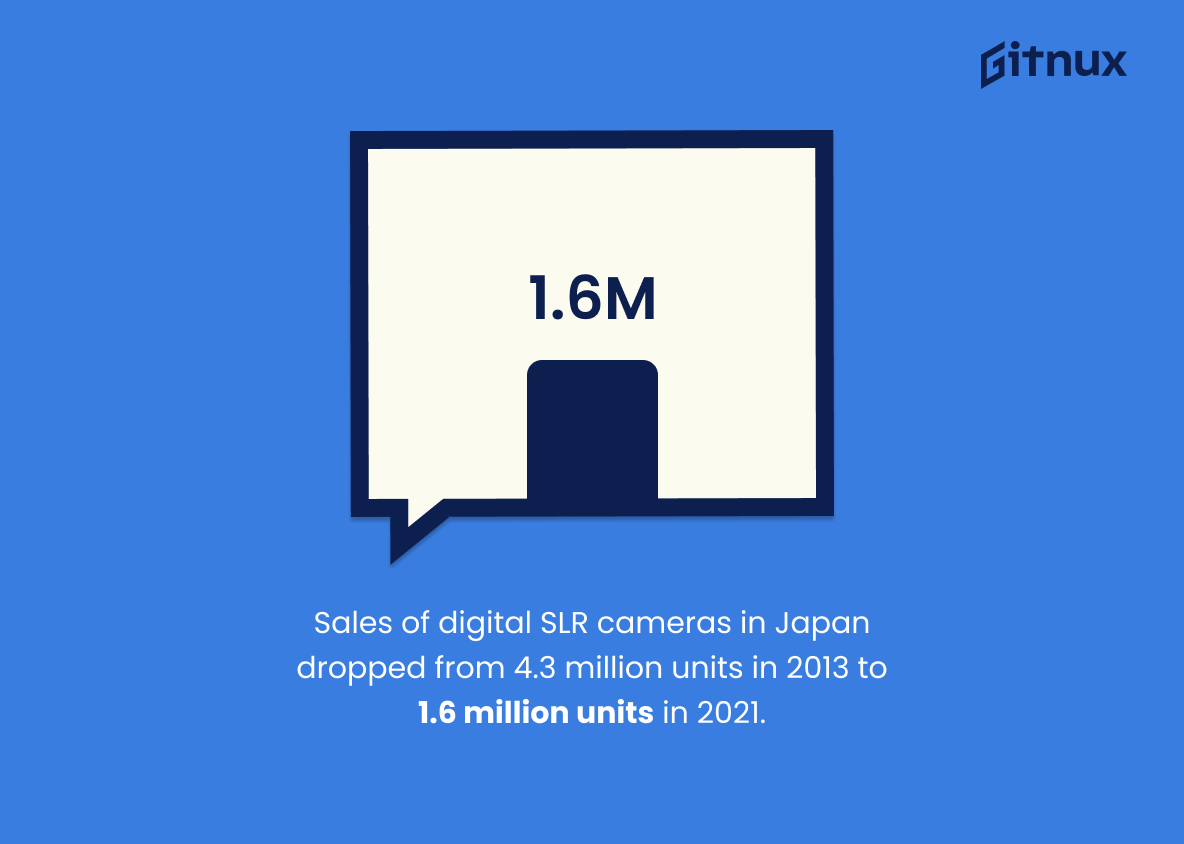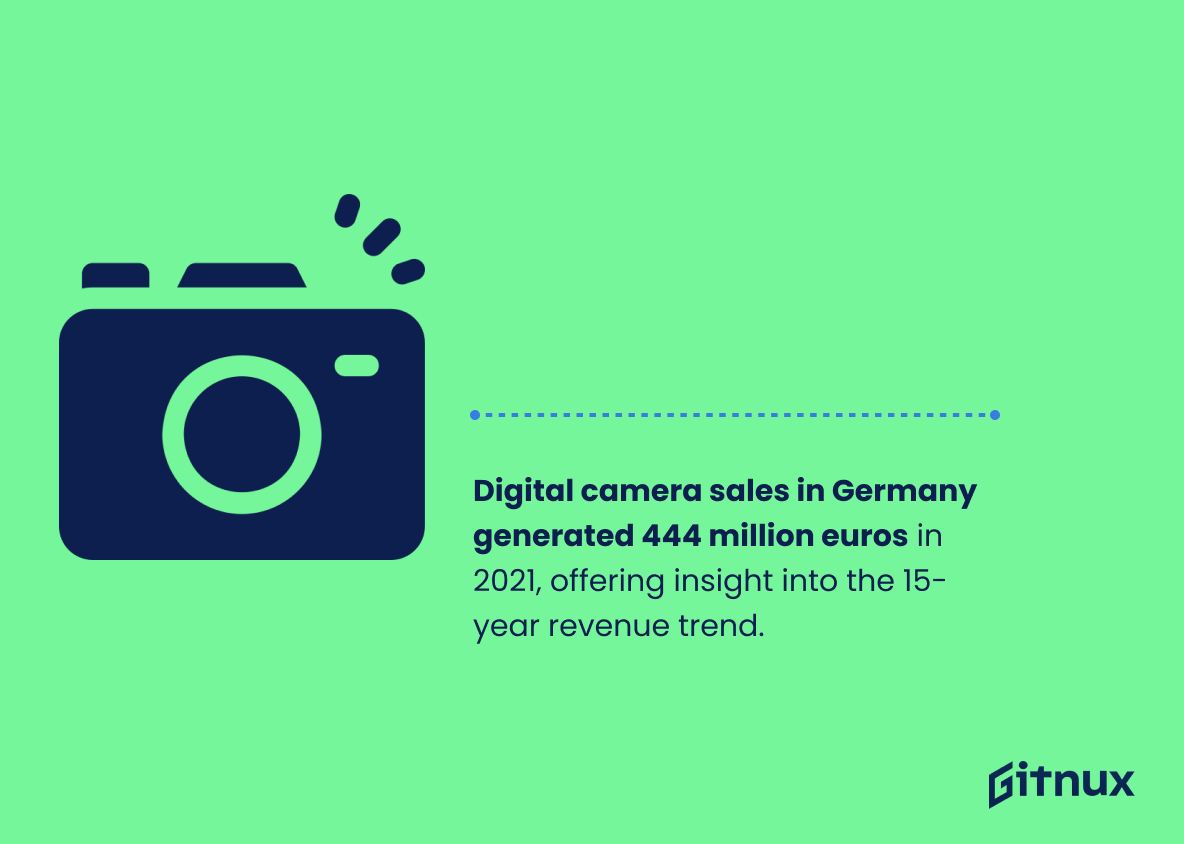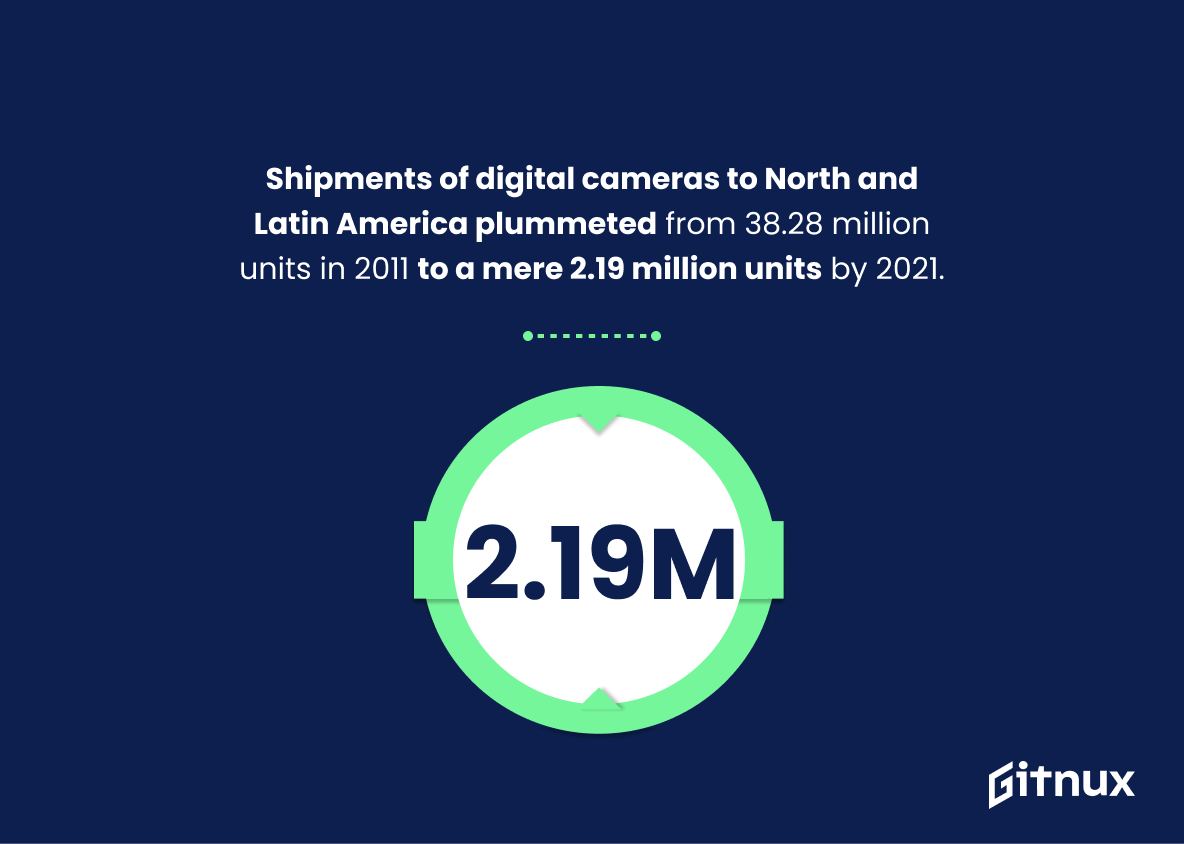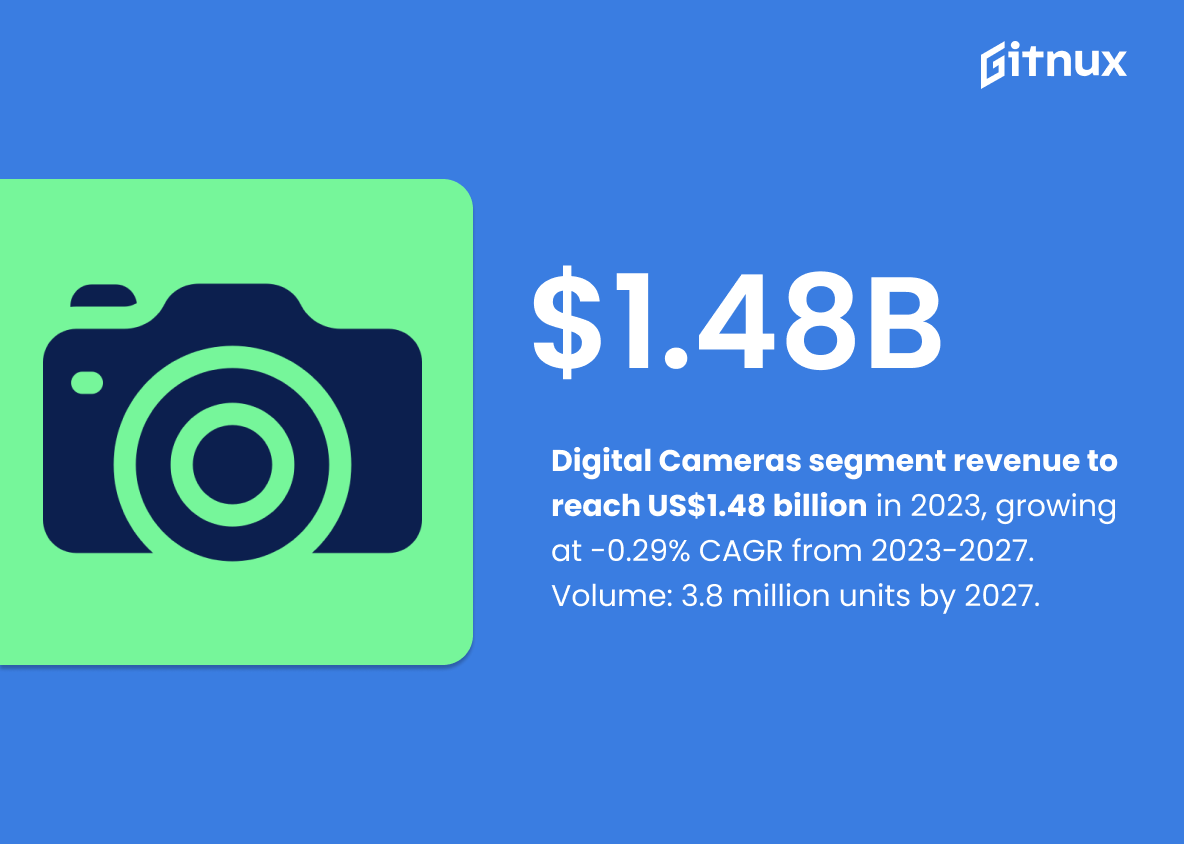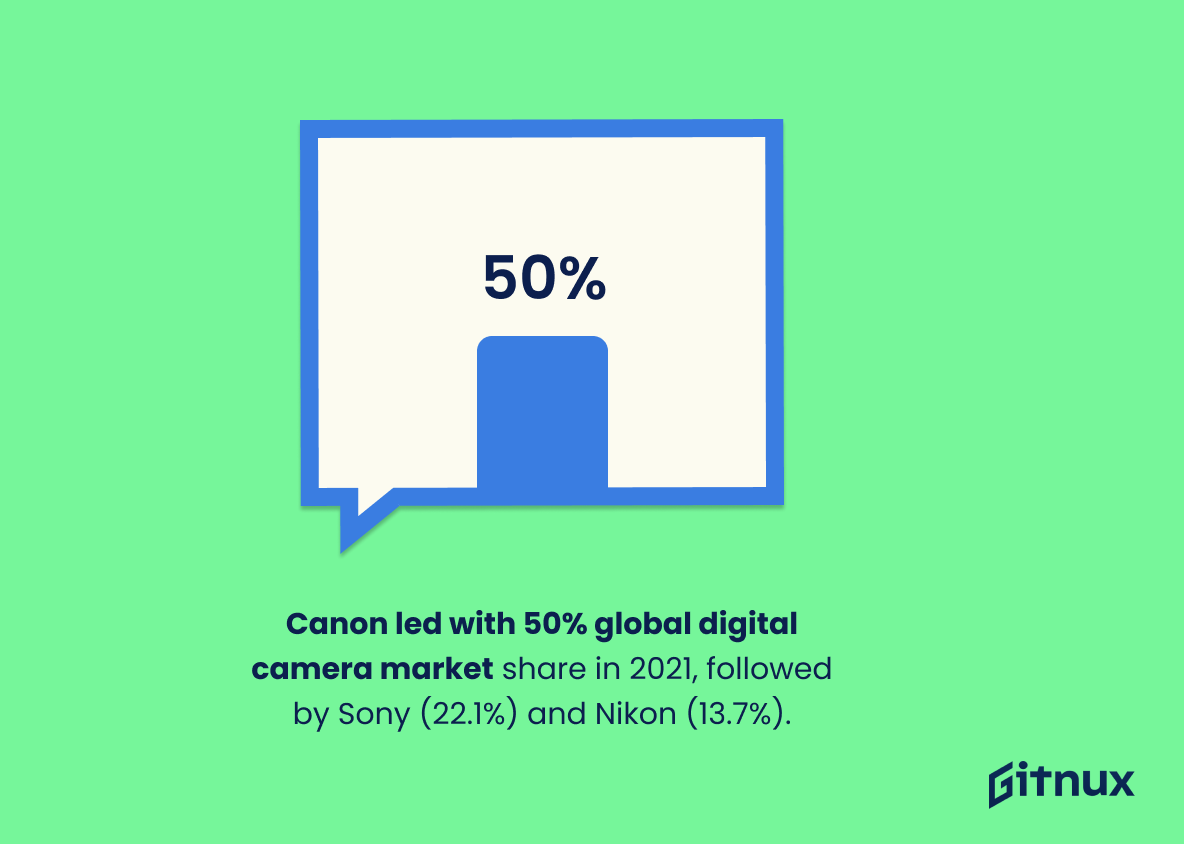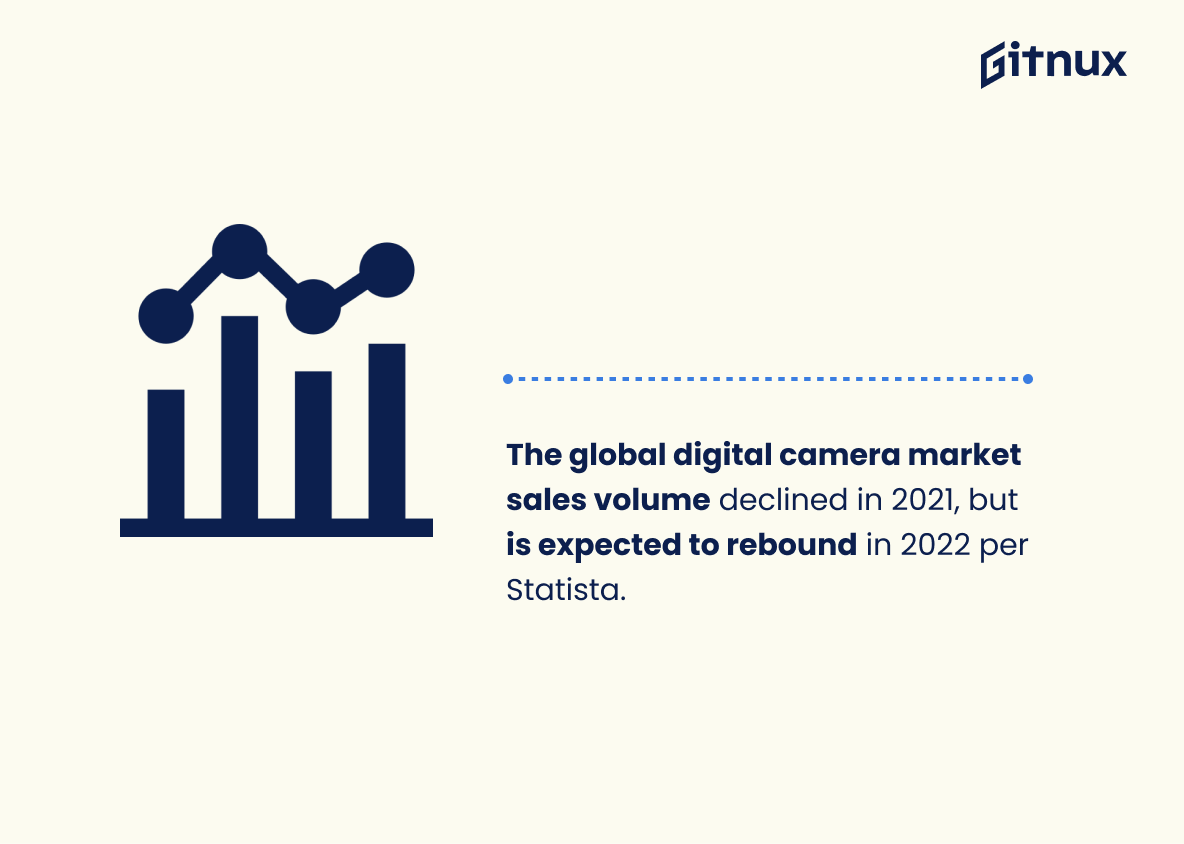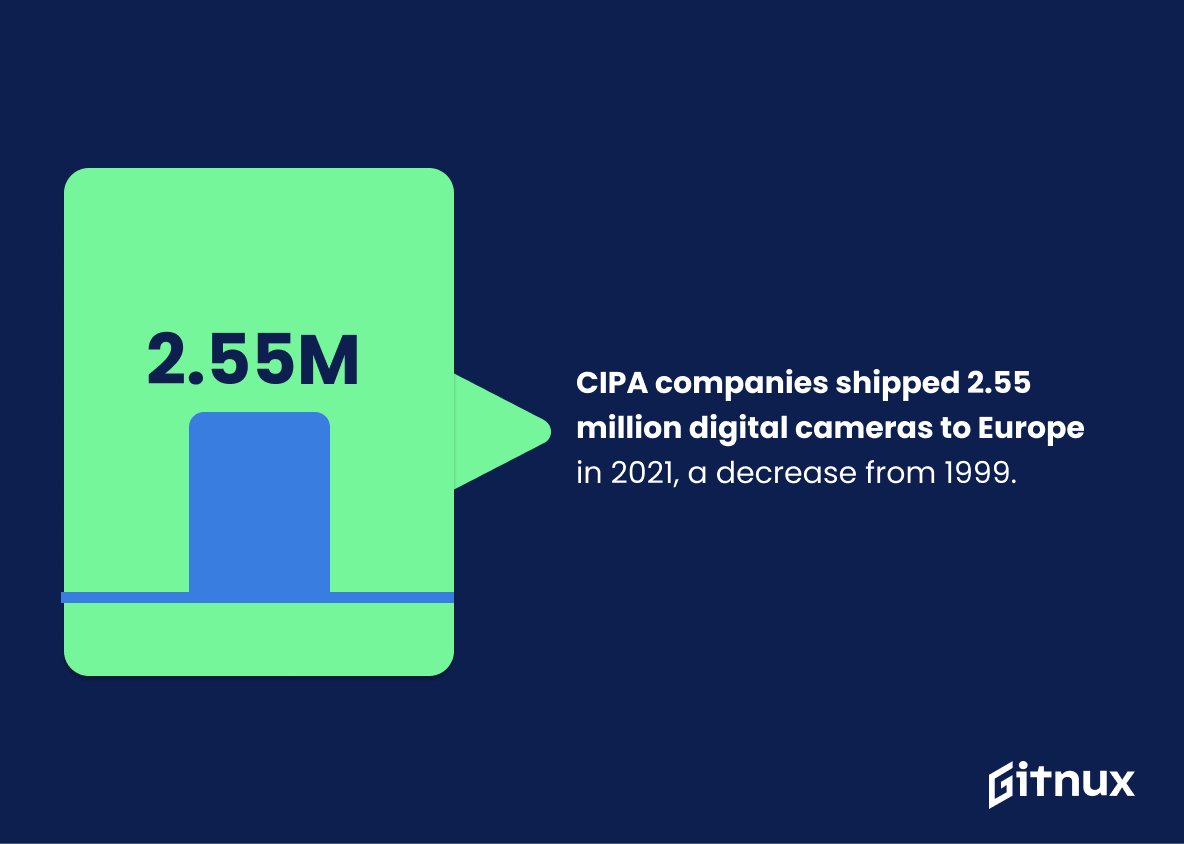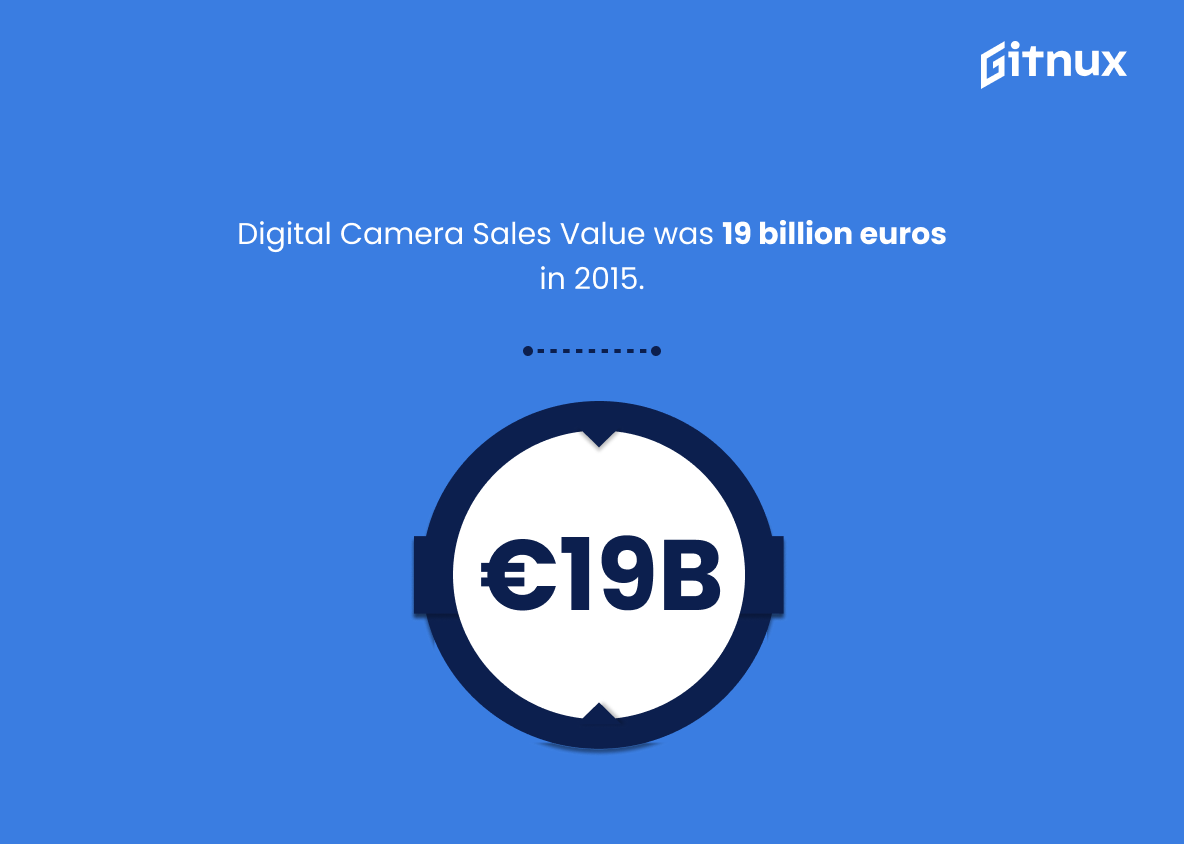Digital cameras have been around for decades, but their popularity has grown exponentially in recent years. With the rise of social media and the ability to instantly share photos with friends and family, digital cameras have become a must-have item for many people.
In this blog post, we’ll take a look at the latest digital camera sales statistics to see how the industry is doing. We’ll also discuss the factors that are driving the growth in digital camera sales and what the future holds for the industry. So let’s dive in and take a closer look at the digital camera sales statistics.
Digital Camera Sales: The Most Important Statistics
Revenue in the Digital Cameras segment is expected to reach US$1.48 billion in 2023 and grow at a CAGR of -0.29% from 2023-2027, with volume reaching 3.8 million units in 2027.
Canon had a nearly 50% market share of the global digital camera market in 2021, followed by Sony and Nikon with 22.1 and 13.7 per cent, respectively.
Digital Camera Sales: Statistics Overview
Digital camera sales in Japan decreased from 111.6 billion yen in 2013 to 16.24 billion yen in 2021, representing a significant drop in sales. This statistic matters in the context of digital camera sales statistics because it shows the decline in sales of digital cameras in Japan over the past few years, which could be indicative of a larger trend in the industry. This could be due to the increasing popularity of smartphones, which are now equipped with high-quality cameras and can perform many of the same functions as digital cameras.
Digital single-lens reflex cameras with interchangeable lenses saw a decrease in sales from 4.3 million units in 2013 to 1.6 million units in 2021. This statistic is important because it shows a decline in the sales of digital single-lens reflexes cameras with interchangeable lenses in Japan over the past 8 years. This could indicate a shift in consumer preferences or a decline in the overall demand for digital cameras. This data can be used to inform decisions about the production and marketing of digital cameras in the future.
In 2021, digital SLR and compact system camera sales in Germany brought in 444 million euros. This statistic matters in the context of digital camera sales statistics because it provides insight into the revenue generated from digital camera sales in Germany over the past 15 years. This data can be used to inform decisions about the digital camera market in Germany and to help understand the overall trends in digital camera sales.
This statistic shows that camcorder sales in Germany generated a revenue of 104 million euros in 2021. This is important because it provides insight into the success of digital camera and camcorder sales in Germany, which can be used to inform future marketing and sales strategies.
Shipments of digital cameras to North and Latin America have decreased drastically since 2011, dropping from 38.28 million units to just 2.19 million units by 2021. This statistic is important because it shows the decline in digital camera sales in North and Latin America over the past decade, which may indicate a shift in consumer preferences or a decrease in demand for digital cameras in the region. It is also important to note that this decline could have a negative impact on the digital camera industry as a whole, as it could lead to a decrease in overall sales and profits.
Revenue in the Digital Cameras segment is expected to reach US$1.48 billion in 2023 and grow at a CAGR of -0.29% from 2023-2027, with volume reaching 3.8 million units in 2027. This statistic is important in the context of digital camera sales statistics as it provides an indication of the current and future size of the digital camera market, as well as the expected growth rate of the market. It also provides insight into the average revenue per person and the average volume per person in the digital camera segment, which can be used to inform decisions regarding digital camera sales strategies.
Canon had a nearly 50% market share of the global digital camera market in 2021, followed by Sony and Nikon with 22.1 and 13.7 per cent, respectively. This matters because it shows how the digital camera market has been declining due to the rise of smartphones with advanced camera technology. Canon’s market share dominance indicates that they have been able to maintain its market share despite the decline in the overall market.
The global digital camera market’s sales volume declined in 2021 and is expected to rebound in 2022 according to the Statista Consumer Market Outlook. This statistic is important because it provides insight into the current state of the digital camera market and its potential for recovery in the coming year. It can help businesses and investors make informed decisions about their investments in the digital camera market.
CIPA companies shipped 2.55 million digital cameras to Europe in 2021, a decrease from 1999. This statistic is important because it provides insight into the overall decline in digital camera shipments from CIPA companies over the past two decades. This information can be used to inform strategies for marketing and production in the digital camera industry.
Digital Camera Sales Value was 19 billion euros in 2015. This statistic matters in the context of Digital Camera Sales Statistics because it provides an indication of the size of the digital camera market in 2015, which can be used to compare to other years and to identify any trends in the market.
Conclusion
In conclusion, digital camera sales statistics show that digital cameras are becoming increasingly popular and are being used more and more in everyday life. As digital cameras become more advanced and more affordable, they are becoming more accessible to the general public. This trend is likely to continue as digital cameras become even more advanced and affordable. Digital camera sales are expected to continue to grow in the coming years, making them an important part of the consumer electronics market.
References
1 – https://www.statista.com/statistics/976290/japan-digital-compact-camera-sales-value/
2 – https://www.statista.com/statistics/975916/japan-digital-single-lens-reflex-camera-sales-volume/
3 – https://www.statista.com/statistics/771934/digital-reflex-system-cameras-sales-revenue-germany/
4 – https://www.statista.com/statistics/462845/camcorders-and-digital-cameras-revenue-germany/
5 – https://www.statista.com/statistics/643133/us-digital-camera-unit-sales-to-dealersl/
6 – https://www.statista.com/outlook/cmo/consumer-electronics/tv-radio-multimedia/digital-cameras/united-states
7 – https://www.statista.com/statistics/1004962/global-leading-manufacturers-digital-cameras-market-share-sales-volume/
8 – https://www.statista.com/statistics/1172711/forecast-of-digital-camera-sales-volume/
9 – https://www.statista.com/statistics/264338/shipments-of-digital-cameras-by-world-region-since-1999/
10 – https://www.statista.com/statistics/270014/global-sales-of-digital-cameras-by-selected-region/
